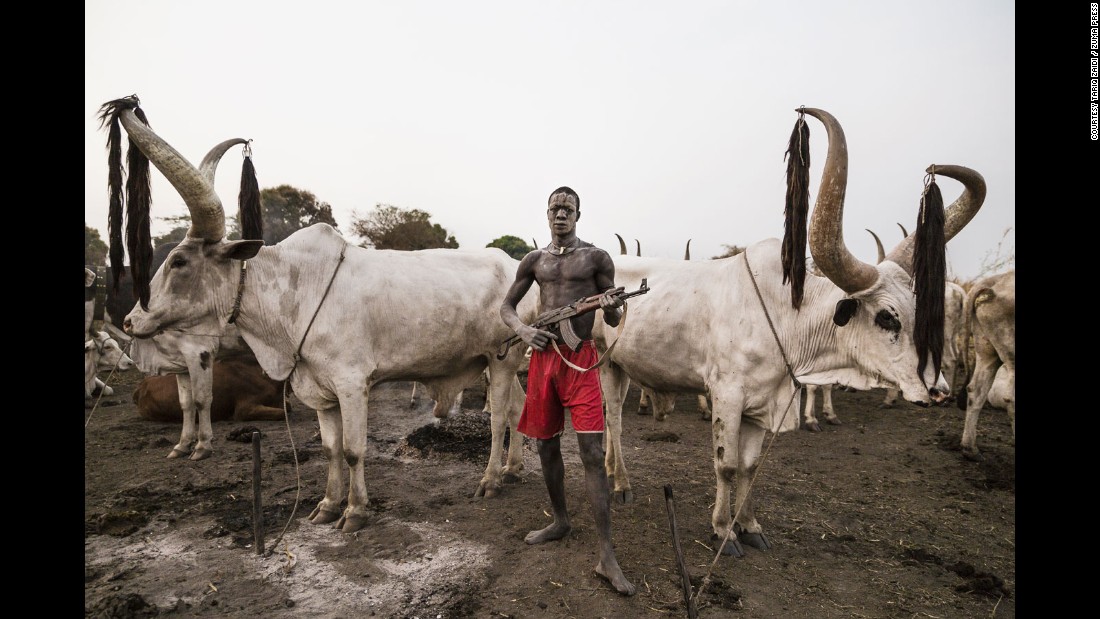
A) SAMBANDHA JNANA & cow protection:
gov anga yavasadina (SB 11.11.43)
I can be worshiped within the cows by offerings of grass and other suitable grains and paraphernalia for the pleasure and health of the cows,
(How can this be called as being related to Sambandha-jnana? Because, "Bhakti-yoga that is performed for the satisfaction of the Supreme Lord VAsudeva brings about detachment from all things unrelated to Him and gives rise to pure knowledge that is free from any motive for liberation and directed exclusively towards the attainment of Him" Srimad Bhagavatam, 1.2.7)
B) ABHIDHEYA & cow protection
**** (I) Gomata - a partner in Vaidhi sadhana bhakti:
(a) 10th principle of vaidhi sadhana bhakti (Bhakti Rasamrta Sindhu,1.2.110_:
aSvattha tulasI dhAtri go bhUmis sura vaiSNavAH
pUjitAH praNatAH dhyAtAH kSapayanti nRNAm agham
In the Skanda Pur€Ša it is directed that a devotee should offer water to the tulas… plant and €malaka trees. He should offer respect to the cows and to the br€hmaŠas and should serve the VaiŠavas by offering them respectful obeisances and meditating upon them. All of these processes will help the devotee to diminish the reactions to his past sinful activities.
(b) Srimad bhagavatam, Go-seva:
uktam bhAgavatam nityam kRtam ca hari chintanam
tulasI poSaNam caiva dhenunAm sevanam samam
Reciting Srimad Bhagavatam daily, remembering Lord Hari constantly, nourishing the Tulasi plant, protecting and caring for the cows, are all equally beneficial (because these acts are pleasing to Krsna) (Bhagavata mahatmya, verse 40).
(c) Daivi sampat qualitites imbibed due to association of mother cow
dhairyaM dhRtiSca SAntiSca puSTirvRddhiH tathaiva ca
smrtirmedhA tathA lajjA vapuH kIrtistathaiva ca
vidyA SAntirmatiScaiva santatiH paramA tathA
yatra gAvastatra lakSMIH sAnkhyAdharmASca SASvataH
(VarAha PurANa, 206.34-35)
By associating with the cows, by serving the cows and by consuming milk and milk products, it is said that one will be endowed with fearlessness, tolerance, peacefulness, strength, sharp memory, intelligence, shyness to act irreligiously, humility, health, fame, knowledge and progeny. Wherever there are cows, there is all prosperity and eternal spiritual knowledge.
(d) DAsyam (of sadhana bhakti) and cow protection:
karma svAbhAvikam bhadram (Bhakti Rasamrta Sindhu, 1.2.185)
To follow svabhava karma (daiva varnasrama dharma) for pleasure of Krsna. Varna samanya dharma (common dharma for all is 'cow protection' and 'growing food' (meaning, not for trade but for self-sufficiency. Trade is exclusive domain of mercantile class)
kRSistu sarva varNAnAM sAmAnyo dharma ucyate
kRSrbhRtiH pASupAlyam sarveSAM na niSidhyate
Agriculture and cow protection are common duty for all the varNAs and they are not prohibited for anyone (VRddha HArita SmRti)
**** (II) Gomata - a partner in Raganuga sadhana bhakti
++ tat-prApty-utkaNTAyAm ekAdaSI-janmASTmI-kArttika-vrata-bhoga-tyAgAdIni tapo-rUpANi tathASvattha-tulasy-Adi-sammAnanAdIni tad-bhAvAnukUlAny eva
The observance of Ekadasi, Janmastami, Kartikka vrata as well as the renunciation of sense pleasures and other austerities, offering respect to Tulasi, the banyan tree, cows etc.; all of these activities executed with eagerness for attaining one's most cherishable relationship with the Desired Object, because they are helpful and favourably disposed towards the attainment of this bhava are called BhAvAnukUla sAdhana (Bhakti Rasamrta Sindhu Bindu, Srila Visvanatha Cakravarthi Thakura)
++ A devotee may be desiring to associate with the Personality of Godhead as His cowherd friend. He will want to serve the Lord by assisting Him in controlling the cows in the pasturing ground. This may appear to be a desire to enjoy the company of the Lord, but actually it is spontaneous love, serving Him by assisting in managing the transcendental cows (Srila Prabhupada, Nectar of Devotion, Chapter 15)
**** (III) Gomata - a partner in Bhava bhakti
++ Impetus (Uddipana) - "Uddipana-vibhava to bhava bhakti
ye kRSNas smArayanti te uddIpana vibhAva
Refers to all those things which stimulate remembrance of Sri Krsna such as His dress and ornaments, the spring season, the bank of the Yamuna, forest groves, cows, peacocks, and so on." (Srila Visvanatha Cakravarthi Thakura, Bhakti Rasarmta Sindhu Bindu)
C)PRAYOJANA & cow protection:
**** (IV) Gomata - a partner in Prema Bhakti
++ Santa-rasa and cows:
(a)Impetus for santa-rasa and cows:
parvata-Saila-kAnanAdi-vAsi-jana-saNga-siddha-kSetrAdayaH uddIpana-vibhAvAH
To live in pure and natural atmosphere devoid of crowded congestion of cities. Such places are known as vivikta deSa full of trees and natural surroundings (just like forests of Vrindavan).
(Of with course cows in such peaceful living. After all, that is how great rsis lived in the past).
(b)Cows gave pleasure to Krsna in SAnta-rasa (Hence worthy of our service):
The land, the grass, the trees, the plants, fruits, or the cows in the transcendental world are supposed to be situated in the santa rasa. As spiritual beings, they are all conscious of Krsna, but they prefer to appreciate Krsna greatness remaining as they are (Srila Prabhupada, Letter to Rupanuga, 12 Mar, 1968).
++ Impetus for Dasya-rasa and cows:
(a)Reverential affection to see Krsna as a cowherd boy:
"When will that glorious day in my life come when it will be possible for me to go to the bank of the Yamuna and see Lord Krsna playing there as a cowherd boy?"
++ Impetus (Vibhava) and Anubhava in Sakhya-rasa and cows:
(a)"Krsna going into the forest to tend the cows" is an impetus for sakhya-rasa.
vrndAraNye samastAt surabhiNi surabhIvrndarakSAvihAri (Bhakti Rasamrta Sindhu, 3.3.66)
(b)Anubhava symptom in sakhya rasa and cows:
puras tairyatrikaM tasya gavAM sambhAlanakriyAH
"Helping Krsna herd His cows" (Bhakti Rasamrta Sindhu, 3.3.95)
++ vatsalya rasa and cows
According to Srila Visvanatha Cakravarti Thakura, the cows loved Lord Krsna in vatsalya-rasa, or the love of parents for a child, because the cows were always supplying milk to Krsna.
Impetus for vatsalya rasa and cows/calves:
vatsarakSA vrajArbhyeNa (Bhakti Rasamrta Sindhu, 3.4.32)
Krsna protecting and herding calves in the forests, is an impetus for Vatsalya rasa.
++ Impetus for Madhurya rasa and cows:
The impetuses of conjugal love are Krsna and His very dear consorts, such as Radharani… and Her immediate associates (who are all gopis, or cowherd women)
Dear Krsna, what woman in all the three worlds wouldn't deviate from religious behavior when bewildered by the sweet, drawn-out melody of Your flute? Your beauty makes all three worlds auspicious. Indeed, even the cows, birds, trees and deer manifest the ecstatic symptom of bodily hair standing on end when they see Your beautiful form (Srimad Bhagavatam, 10.29.40)
When one gopi perfectly imitated how Krsna would call the cows who had wandered far away, how He would play His flute and how He would engage in various sports, the others congratulated her with exclamations of "Well done! Well done!" (Srimad Bhagavatam, 10.30.18)
Your lotus feet destroy the past sins of all embodied souls who surrender to them. Those feet follow after the cows in the pastures and are the eternal abode of the goddess of fortune. Since You once put those feet on the hoods of the great serpent Kaliya, please place them upon our breasts and tear away the lust in our hearts (Srimad Bhagavatam, 10.31.7)
Dear master, dear lover, when You leave the cowherd village to herd the cows, our minds are disturbed with the thought that Your feet, more beautiful than a lotus, will be pricked by the spiked husks of grain and the rough grass and plants (Srimad Bhagavatam, 10.31.11)
**** Tending cows - natural occupation of Krsna in Goloka Vrndavana
cintamani-prakara-sadmasu kalpavriksha-
lakshavrteshu surabhir abhipaalayantam
lakshmi-sahasra-sata-sambhrama-sevyamanam
govindam aadi-purusham tam aham bhajami
“Lord Krishna is situated in a spiritual abode made of transcendental gems. In that abode he is surrounded by millions of desire fulfilling trees (kalpa-vriksha), and he takes pleasure in tending the divine cows. He is always being served with great reverence and affection by hundreds of thousands of devotees. To that Supreme Lord, who is always trying to satisfy the senses of the cows, and who is the original person, I offer my worship.”
[Brahma-samhita]
Ofcourse not touching about Karma-kanda, Jnana-kanda and cows.









